The project is BSIGN, a Ukrainian company that has been producing unique interior signs and license plates for more than 10 years, focused on sales in the United States, Canada, and Europe.
Project CMO is Serhiі Soloviov.
The service is an outsourced marketing department: audit of the advertising account and launching of the advertising campaign, audit, and setup of email marketing, development of a content plan for social media and a corporate website, SEO optimization, creatives for advertising, website, and newsletters.
Case navigation:
- Solve Marketing team members
- Stage one. Study of the project features. Formulation of strategic goals
- Stage two. Audit of communication channels and recommendations
- Stage three. Implementation of a comprehensive marketing strategy
Solve Marketing team members
The project marketing team consists of the following specialists:
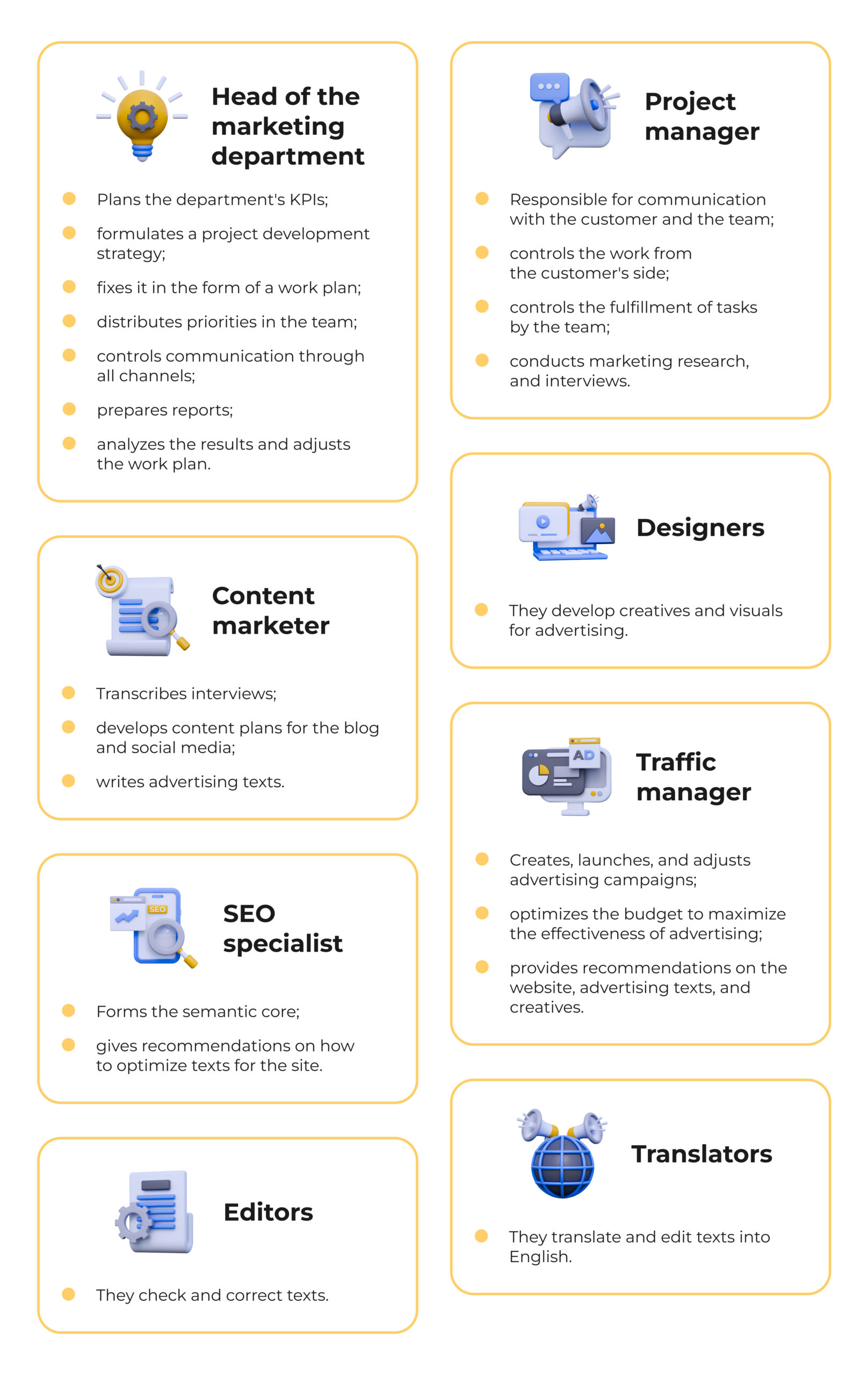
Stage one. Study of project features. Formulation of strategic goals
BSIGN is a Ukrainian company with production facilities in Kyiv. For 10+ years of work in the domestic market, the company has gained extensive experience and received many positive reviews.
The main task now is to expand its presence in the US, Canada, and Europe. The good news is that we already have orders from these countries, which means we have a good start and satisfied customers.
The target audience is the B2B segment. BSIGN’s customers are usually people aged 35+ who belong to one of the following groups:

According to customer feedback, the main advantages of BSIGN:
- very high quality of the product because the signs are made by hand and carefully checked before being sent to the customer;
- availability of resources to make signs according to an individual project (size, Braille, wood color, etc.)
- excellent taste and ability to make stylish and trendy signs that emphasize the interior, and look expensive and elegant.
We have also formulated the main tasks that BSIGN products help to solve:
- emphasizing the status of an institution, building, or organization and complementing the interior;
- attracting new and existing customers and visitors through an attractive interior;
- achieving respect and recognition of the environment;
- establishing navigation in the building.
We had to show these advantages of the company in all communication channels to attract the audience for which it is important.
We decided that we would work on the following strategic areas:
- a blog on the website;
- email newsletters;
- social media promotion.
Stage two. Audit of communication channels and recommendations
Taking into account the areas of work we had chosen, we analyzed the current state of affairs and prospects in them.
The site did not have a blog, so we developed detailed guidelines for writing texts and created a detailed content plan. It described:
- dates and topics of publications;
- the summary and purpose of each of them.
We also studied the state of email newsletters. We researched the existing email database in SendPulse by sending a reactivation email. To do this, we designed a new email that contained information about the company, products, a link to the website, and a discount promo code.
It turned out that 4,222 emails were delivered from a database of 4,298 addresses, and 1,455 were opened. That is, the open rate was 34.46%.
So, our goal was to increase the percentage of views and clicks in the email itself.
The company had previously managed social networks, so we had to continue doing so, maintaining the visual style and providing subscribers with useful and interesting information.
We paid attention to analyzing social media advertising. It turned out that different variants of advertising texts and creatives had not been tested before. We suggested testing at least a few formats and seeing if it was worth developing this promotion area.
Stage three. Implementation of a comprehensive marketing strategy
After the customer accepted our recommendations, we started implementing them.
Working with the website
The company had a stylish and functional website. That’s why we offered to make a pop-up. Its purpose was to actively collect visitors’ email addresses.
We developed the appropriate ToR for the programmers and then set up a pop-up offering to receive a new catalog in pdf format by leaving their email addresses.
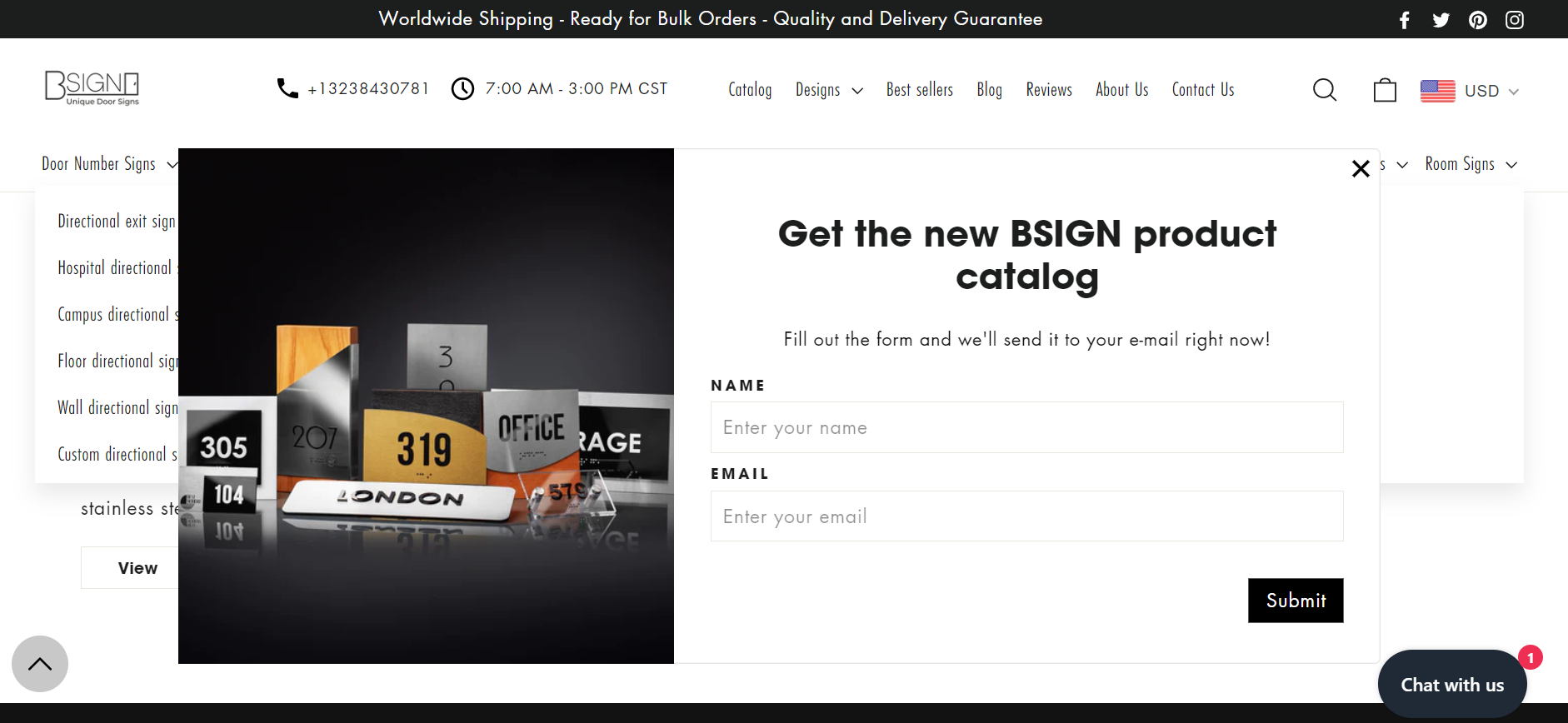
Thus, at the time of writing, 4144 emails with the catalog were sent, with 1508 views and 113 visits to the site.
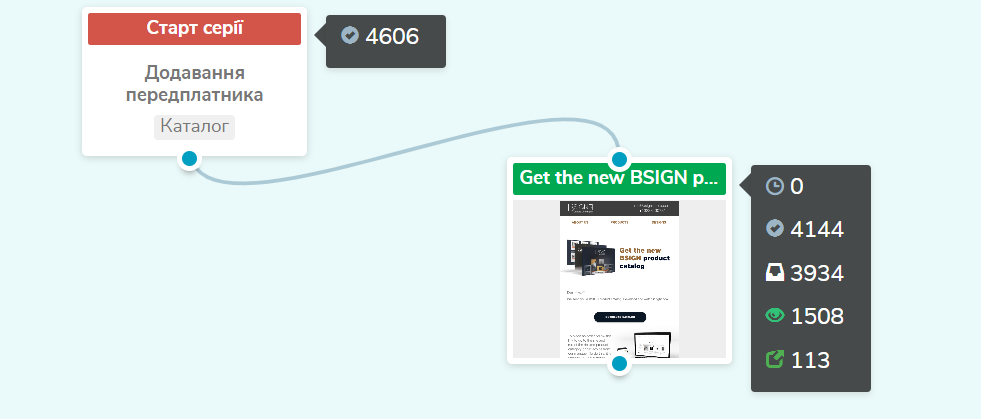
Creating and publishing content
First of all, we developed headings for future content and created a plan. We wrote a separate article on how to work with a content plan.

To protect ourselves from force majeure, we prepare content not only according to the plan but also in advance. That is, we have materials at least a week in advance. So, if someone from the team falls ill, for example, colleagues will be able to pick up the work and publish articles, posts, and stories on time.
For the website
We wrote and started publishing SEO-optimized materials on the blog that answer important questions for customers and form the image of the manufacturing company.
In the first month, we wrote 4 blog posts, and created 20 series of stories and 12 publications. In the future, we plan to publish a new blog article at least once a week, stories every day, and posts three times a week.
- In the case studies, we talk about how BSIGN solves specific problems that customers come to us with. To do this, we take brief technical information from the company owner and turn it into a story that is interesting and allows you to “read between the lines” and conclude.
For example, there was a case when the developer needed to make license plates that would perfectly harmonize in color with the doors of an elite residential complex in Kyiv.
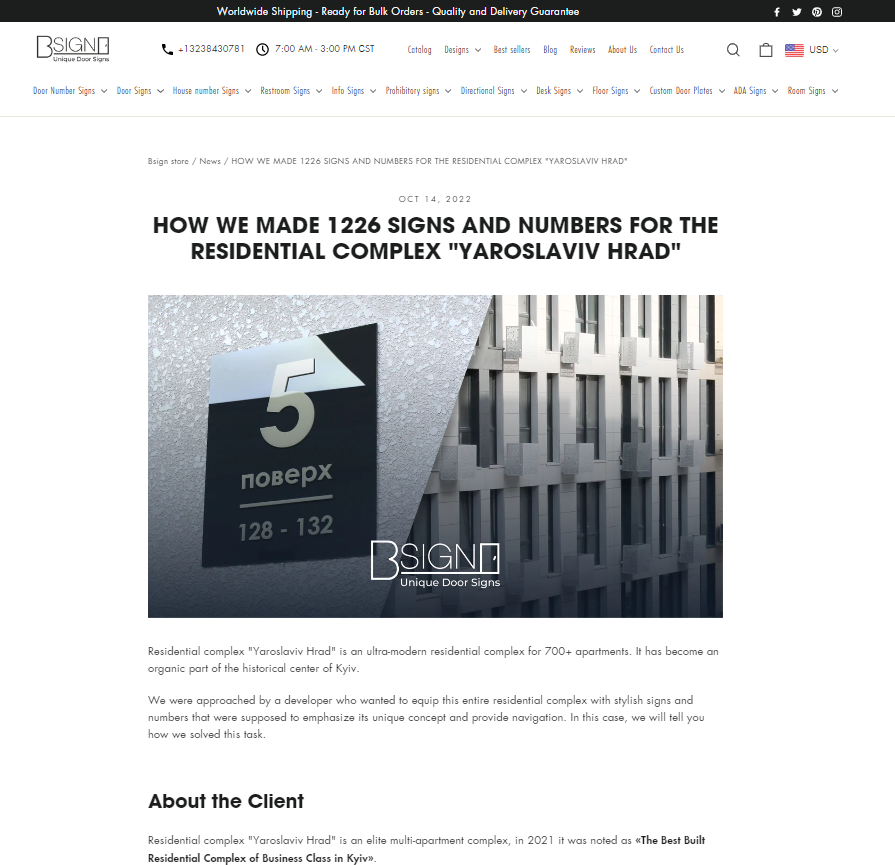
Few people dared to take on this order because of its complexity and scale. On the contrary, the BSIGN team took this hard work as a challenge and a growth area. As a result, the customer was truly satisfied and left a very warm and positive review.
Reading such stories, customers understand:
- For BSIGN, customized orders, even from very demanding customers, are not a problem;
- the manufacturer cooperates with reputable companies so that it can be trusted;
- BSIGN employs real professionals with developed tastes and knowledge of design trends, so you can rely on them when aesthetics are very important.
You can read this case study on our customer’s website.
In our articles, we answer questions that are important to our customers and talk about topics related to the arrangement of commercial premises, features of BSIGN products, etc.
For example, we wrote an article explaining how BSIGN’s production works during the war. It provided statistics on the number of orders fulfilled at the time of writing. We also explained that the situation with material suppliers is under control and that BSIGN delivers its products by international carriers. In other words, we answered questions that could stop potential customers from ordering.

The content on the blog also acts as a guide for the customer. For example, it helps to navigate which number or plate is best suited to the interior, and to understand the advantages of the materials from which the products are made.
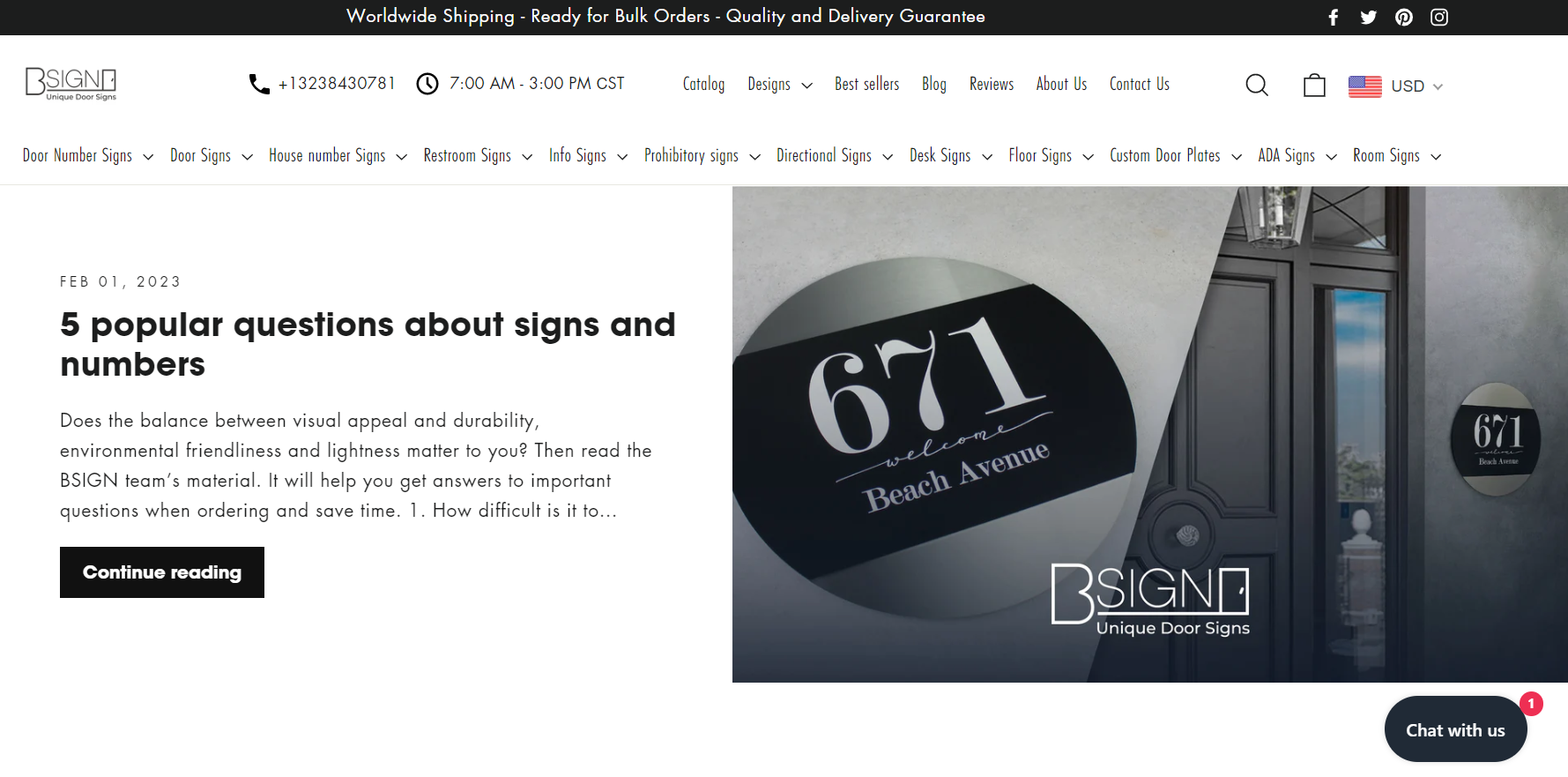
Overall, since the launch of the website, its traffic has increased by 57%:

For social media
This is where we post useful but short posts and stories. We also post high-quality photos and videos that allow users to take a closer look at the products and form an impression of them.
This is due to the preferences of social media users who prefer short but informative formats.
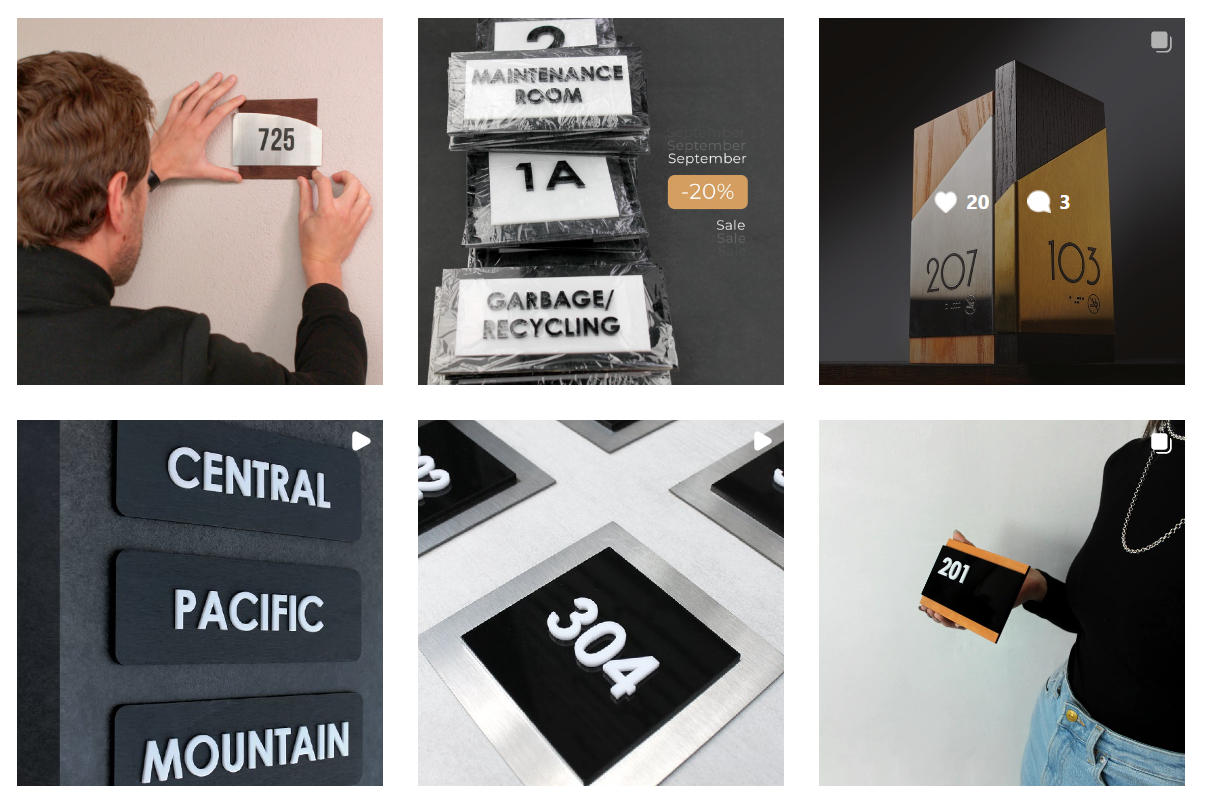
We also know that social media users like interactivity and gamification. Therefore, we have developed several story scenarios in these formats.

In each post, we mention that there is a link to a website where you can get more information in the profile header. We also use thematic hashtags that bring in a new audience from tag searches on Instagram.
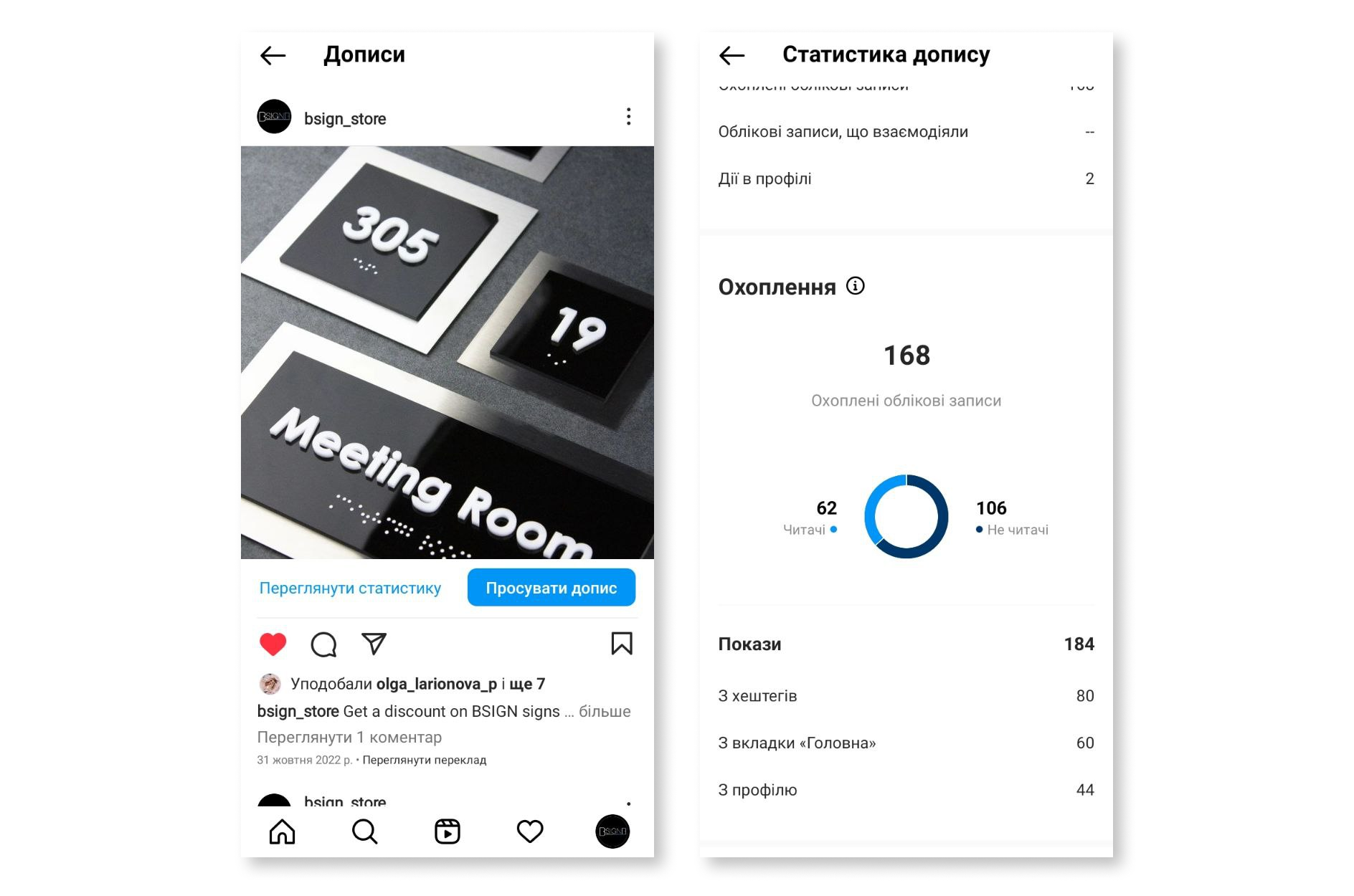
Advertising on Instagram
As part of the developed promotion strategy, we started with two posts.
In them, we showed examples of the company’s products and supplemented them with useful text.
Here are the results for one of them:
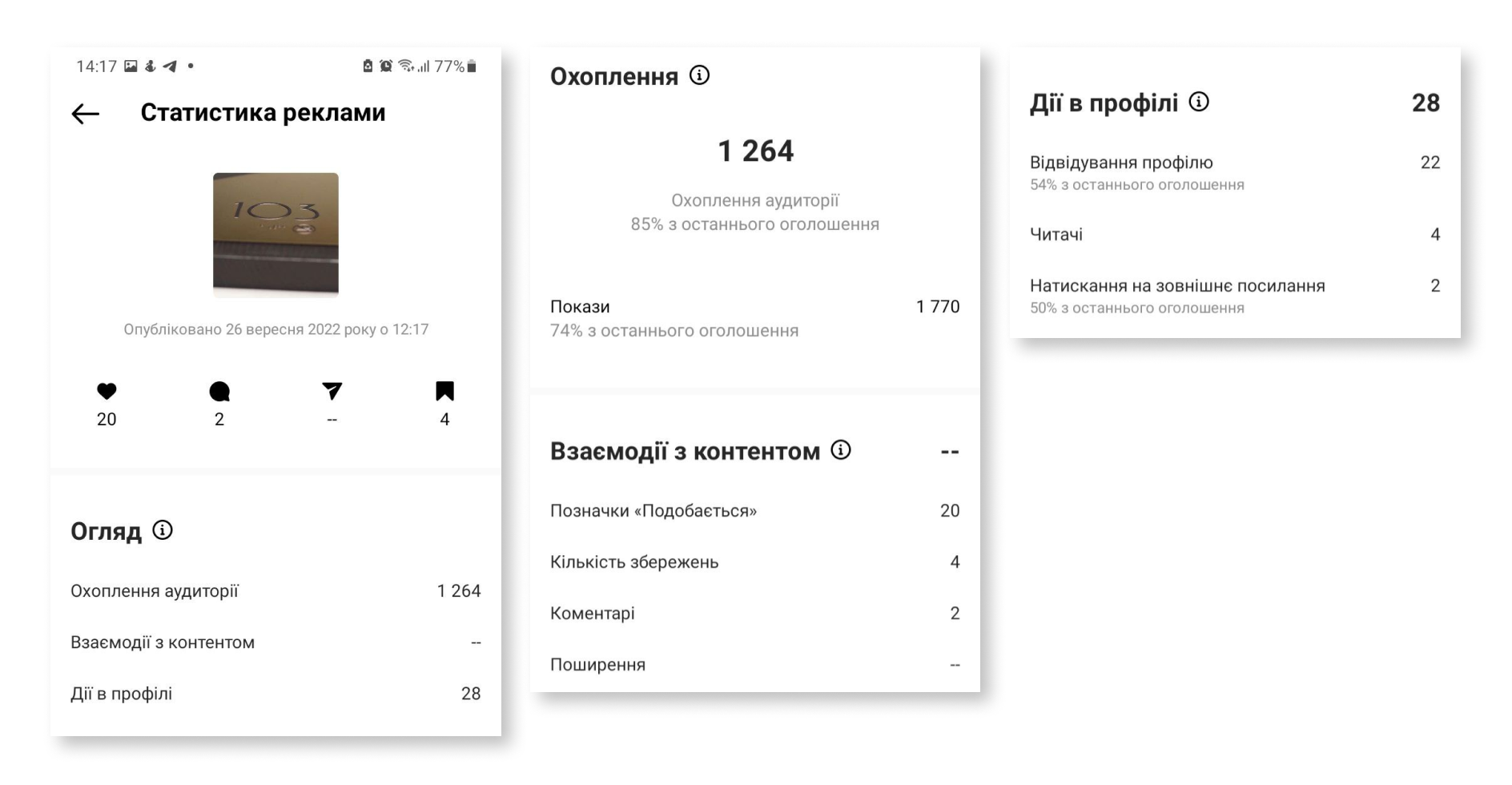
We saw that the reach was growing, people were liking the posts, saving them, and going to the site. Given that plates and license plates are not a commodity of everyday demand, these are good indicators. Those who saved the posts are likely to return to them when they need to place an order.
We will continue to periodically promote posts to remind those who are already interested in the product and to reach new audiences. We also plan to adjust the audience to which we show ads based on statistics.
Advertising on Facebook
For testing, we chose a dynamic catalog that has not yet been used for promotion. Before launching this tool, we made preparations.
1. We decided that we would use a Look-a-Like audience in three stages:
- all designs
- each design separately;
- product categories.
2. We prepared creatives and advertising texts.
In general, we got the following result:
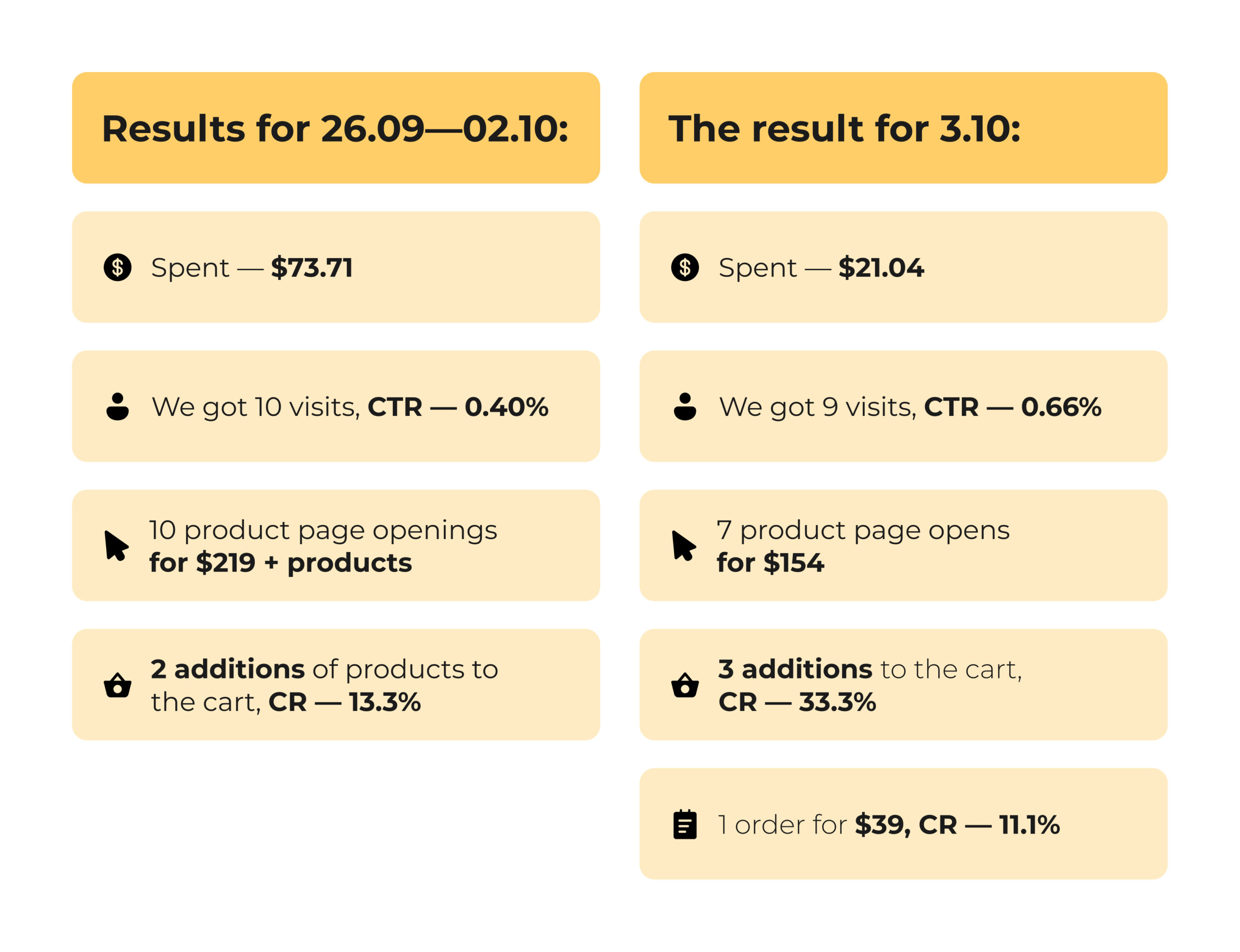
Based on the test results, we decided to postpone the use of this tool for a while.
Email marketing
After analyzing the contact database, we developed an effective algorithm for working with email campaigns.
The first step is to draw up a technical specification. In it, we write down
- the text that will be in the newsletter, immediately divided into logical blocks;
- call-to-action buttons (CTAs);
- graphic elements with references and textual explanations of the appearance of such blocks.
When we have such a structure of the ToR, it is clear what photos we need from the customer and how many of them there should be. Sometimes, we also need to ask for some statistics or get a comment.
After we receive the materials, our designer creates a layout for the newsletter. It is approved by the customer, and then we lay out the email in SendPulse, and test it on desktop and mobile devices. This is very important because sometimes the display is different.
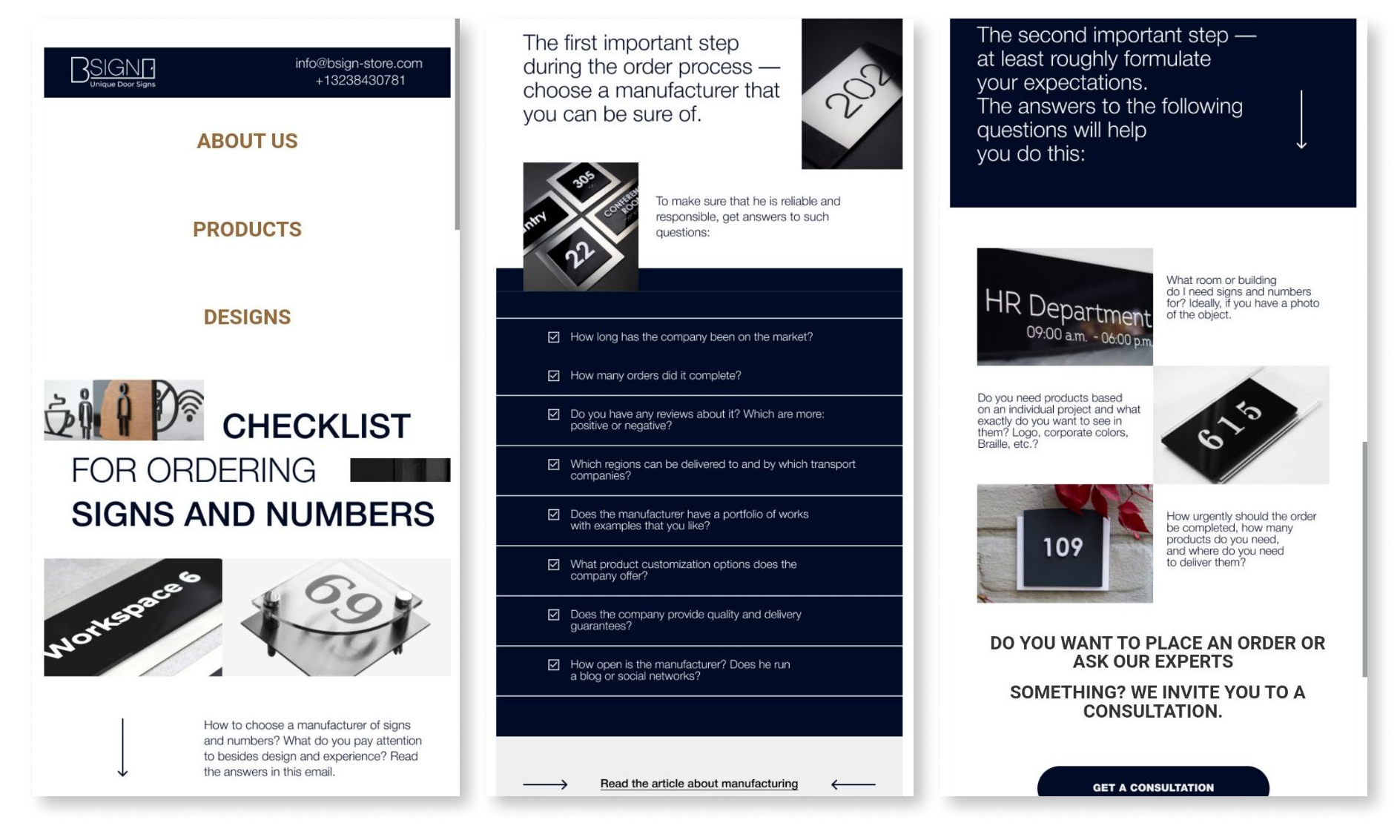
Before each mailing, we update the address database and send emails to the current list.
We also make sure to collect email statistics. This allows us to see, for example, when emails are most open. We adjust the sending time accordingly.
We also look at whether people click on links and how they respond to promotions. For example, from the very first promotional email, we had two orders using a promo code. This shows that the newsletter is working and worth developing.
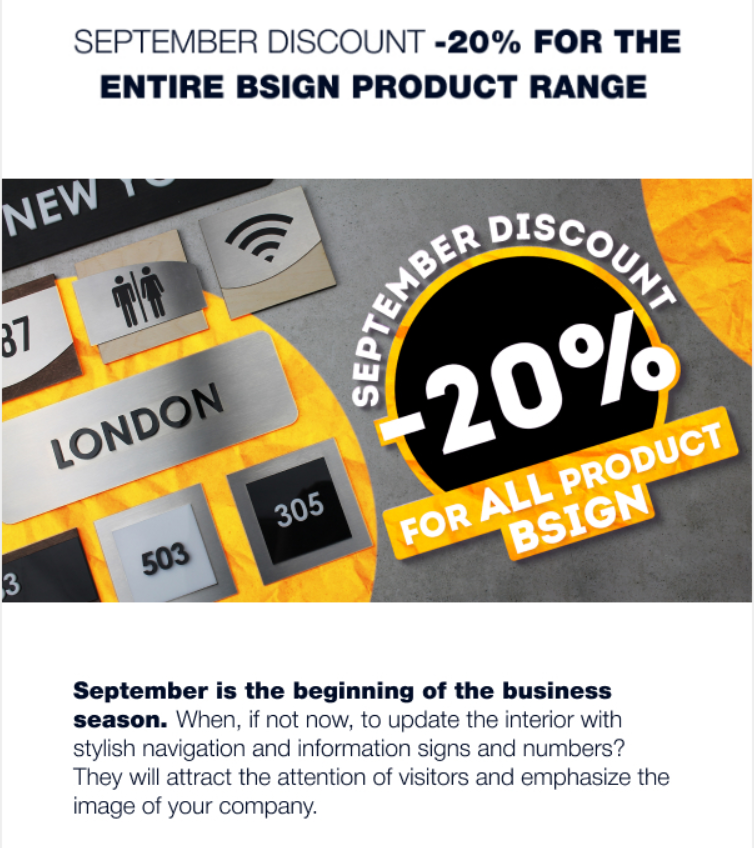
Also, if we compare the activity of newsletter subscribers at the beginning of our work and at the time of writing the case study, we see the following:
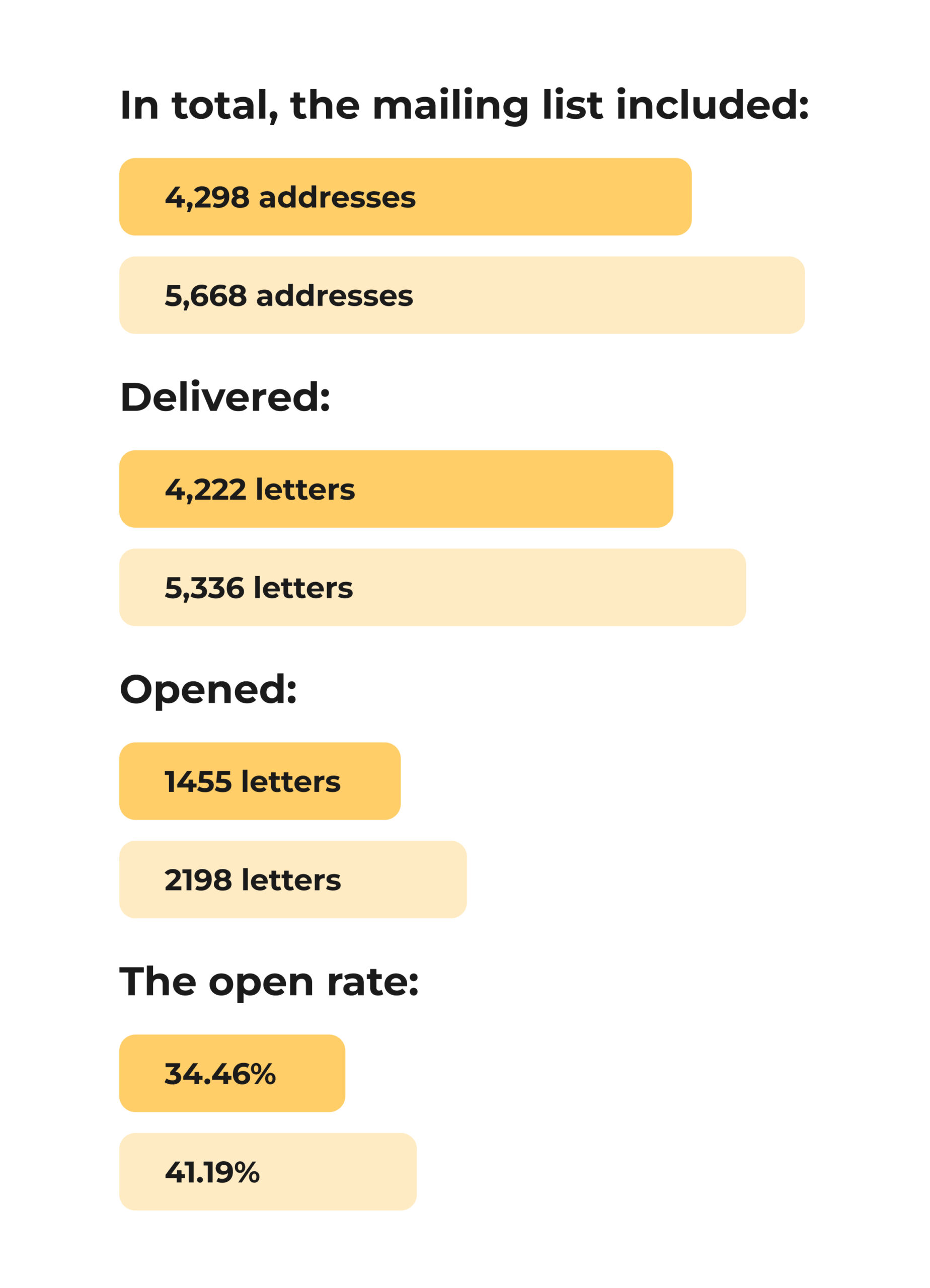
This is what the statistics look like in the Sendpulse service.

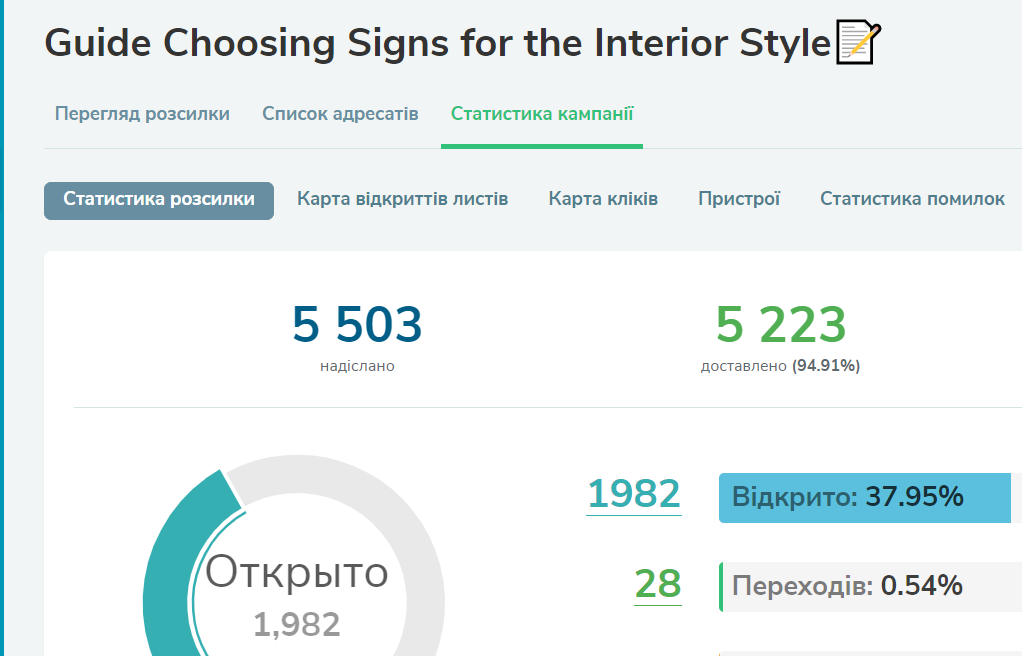
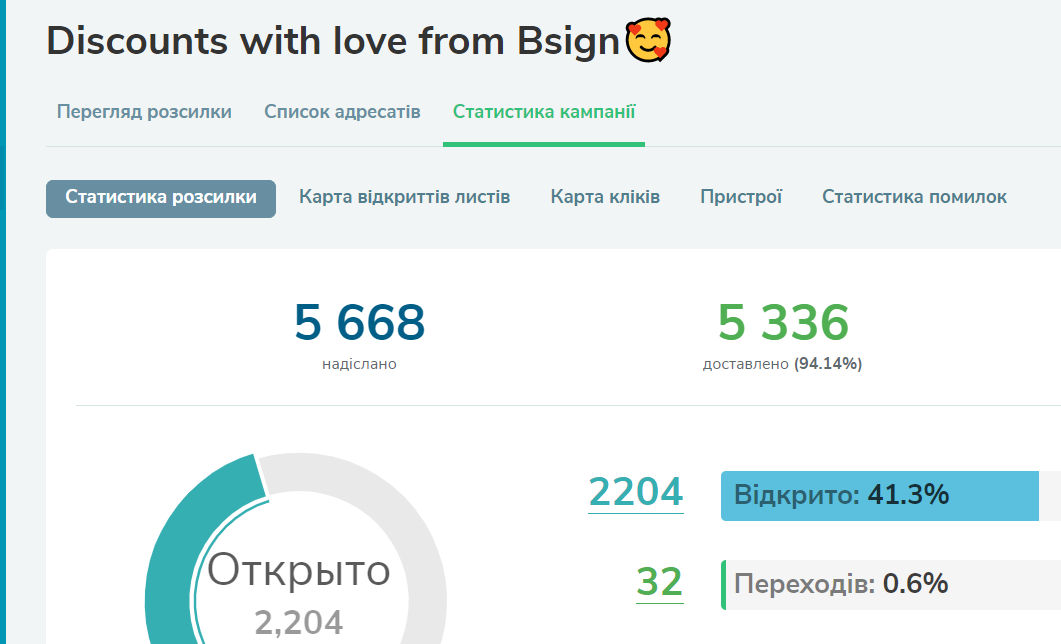
Working to increase customer loyalty
For the management of the customer company, the highest level of service and customer comfort at all stages of interaction with BSIGN are among the priorities.
That’s why we created a checklist for the sales department. We prepared a form with questions that managers will provide to the customer at the stage of ordering. This approach minimizes the number of misunderstandings and ensures that the customer has the perfect product for him. By answering questions on their own, the customer provides the maximum amount of information important for production and gets what they want.
Promotions, discounts, and special offers are a way to attract people’s attention, a kind of information occasion. And then there is a separation of the goals of such events.
For potential customers, a promotion is a way to order a product of interest at a reduced price. At the same time, the customer needs to get in touch with the potential customer.
Because during the consultation, the potential buyer sees the level of the company’s expertise and the discount becomes a bonus for him, not a priority.
For regular customers who already know the level of service and quality of products, special offers remind them of the company and become a pleasant addition to the purchase.
For BSIGN, we have developed 5+ info drives and the mechanics of their implementation and are systematically implementing them.
P.S. In general, cooperation with the customer will continue from August 2022. So, you can expect more information soon.





